
From the 1979 model year through the 1993 model, the 3rd generation Ford Mustang spanned 15 years of production. Ford's third-gen pony car is more commonly referred to as a Fox Body Mustang after the unibody, rear-wheel drive platform that this generation Mustang is built upon. A total of 15 distinct Ford/Lincoln-Mercury vehicles were produced on the formidable Fox foundation, including the Ford Thunderbird, Mercury Capri, and Lincoln Mark VII. The Fox platform is the second longest running platform of Ford's illustrious production history, behind Ford's Panther body-on-frame foundation architecture that spanned 1978-2012, or 33 model years. Read on as we take a look back at Fox Body Mustang history.
The Fox Body Almost Faced Extinction
In the early 1980's, the rear-drive Mustang was almost discontinued. All American car companies were shifting to designing, engineering, and manufacturing front wheel drive vehicles that were more fuel efficient, easier, and cheaper to build. By 1987, eight years into Fox Body history, Ford planned to replace the rear-drive Mustang with the front-wheel-drive Ford Probe. The Probe was a collaborative design and engineering effort with Mazda, as Ford had a percentage ownership stake in Mazda at the time. Thanks to a massive influx of angry letters, read stampede from Mustang fans, the Fox Body Mustang was saved.
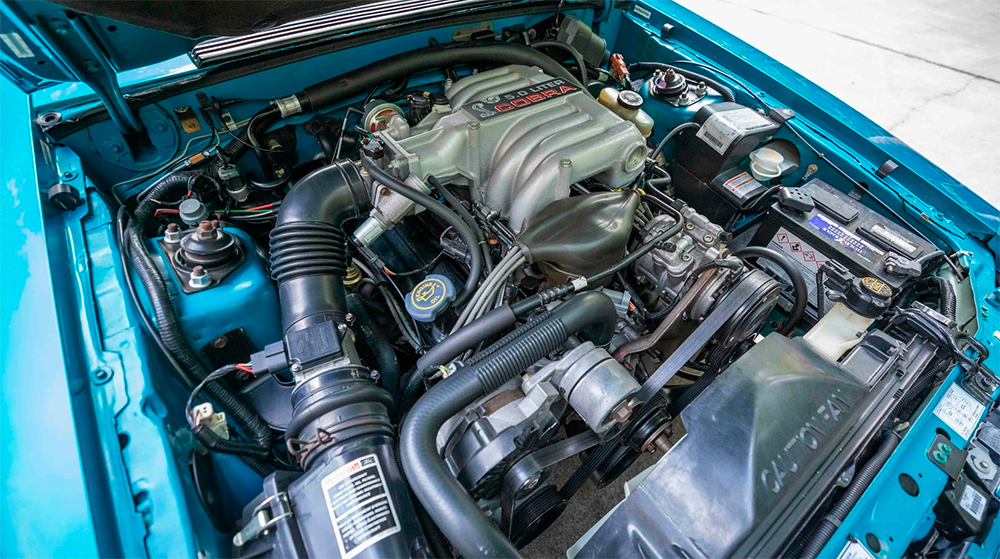 Above and below: The engine in the lead photo 1993 Mustang SVT Cobra is a 5.0L (302-cubic inch) fuel-injected V8 that produces 235-horsepower. This was the top of the performance food chain for the Fox Body Mustang. The 302's backed by a Borg-Warner five-speed manual transmission.
Above and below: The engine in the lead photo 1993 Mustang SVT Cobra is a 5.0L (302-cubic inch) fuel-injected V8 that produces 235-horsepower. This was the top of the performance food chain for the Fox Body Mustang. The 302's backed by a Borg-Warner five-speed manual transmission.
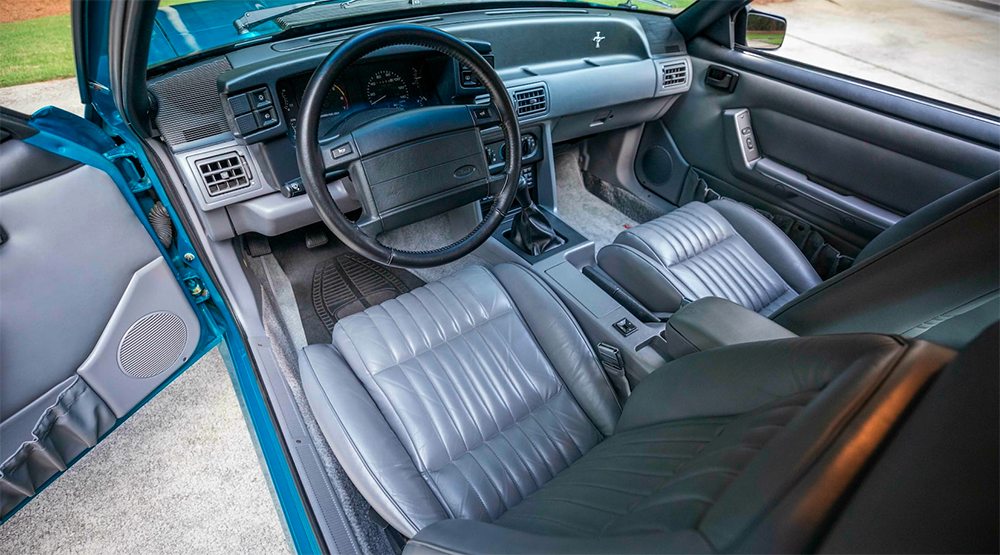
In 1989, Ford put the new Probe on sale alongside the Mustang. The Blue Oval's sneaky little plan was to have the public fall in love with the all-new Probe versus the 10-year-old designed Fox Body Mustang and let the new vehicle sales decide whether the venerable rear-drive Mustang would live to gallop free another day. In dramatic fashion, the multitude of American pony and muscle car fans voted with their hard-earned money. The Mustang outsold the Probe, 209,769 units to 162,889 units respectively. By the end of the Probe's existence, in 1992, Ford sold 79,280 Mustangs and 41,035 Probes.
 Above and below: 1,355 Mustang SVT Cobras were adorned in Teal. The interior sports Opal Gray leather seating surfaces.
Above and below: 1,355 Mustang SVT Cobras were adorned in Teal. The interior sports Opal Gray leather seating surfaces.
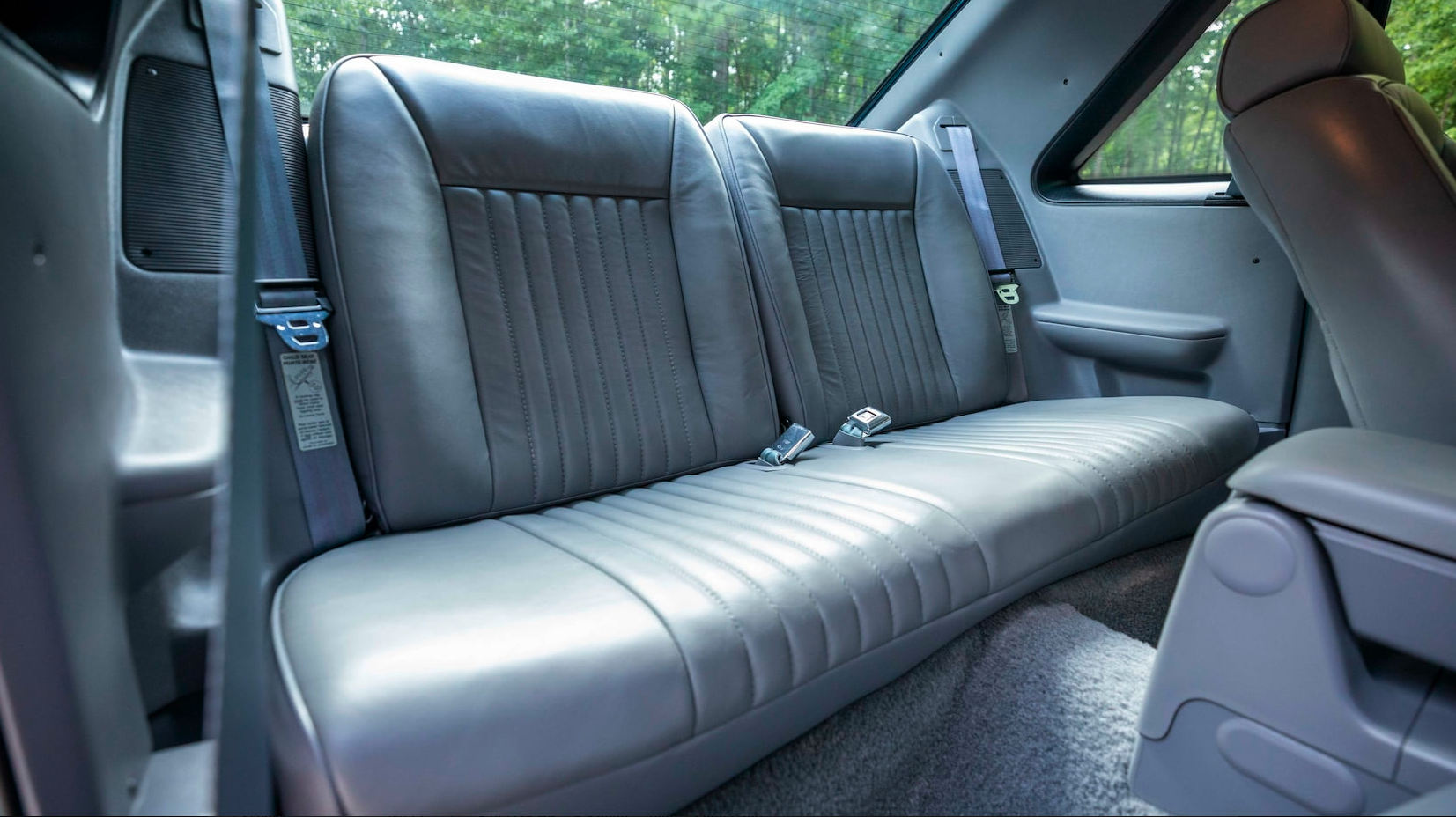
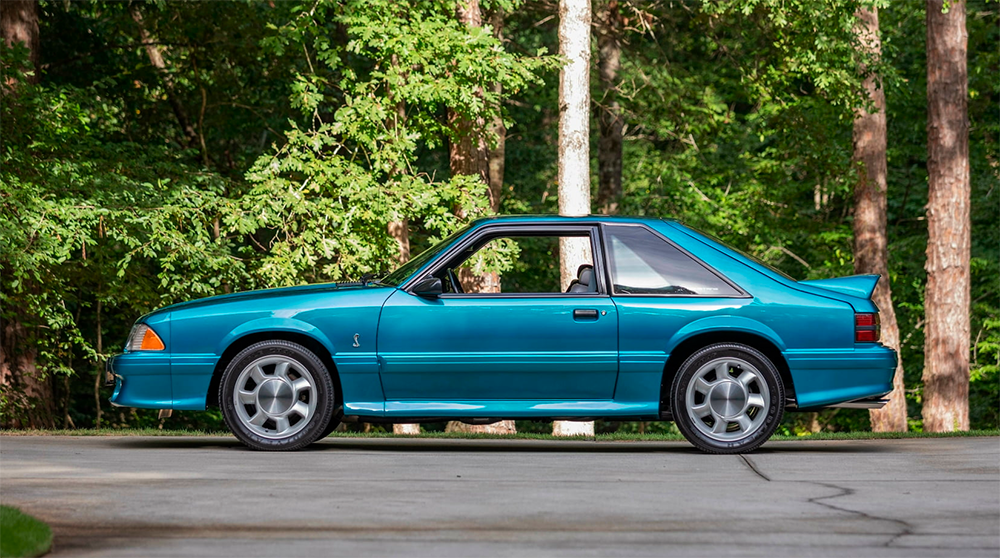
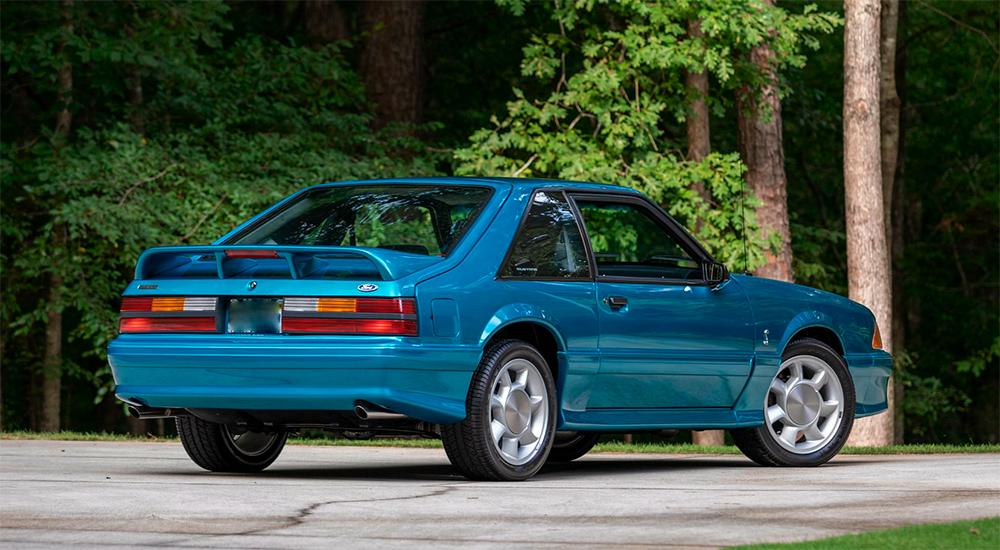
The History of the Fox Body Mustang
"To be or not to be," that was never a question for anyone at Ford when it came to envisioning the 3rd generation Mustang. The Mustang II, though popular the first couple years of its existence, was being bested sales wise by the European-styled 2nd gen Camaro towards the mid-to-latter part of the Mustang II's five-year run. Ford's VP of Design in Dearborn, Michigan, Gene Bordinat instructed a VP of Design at Ford of Europe, Jack Telnack, to move back to Dearborn and head up a design team for the 3rd generation Mustang in 1976.
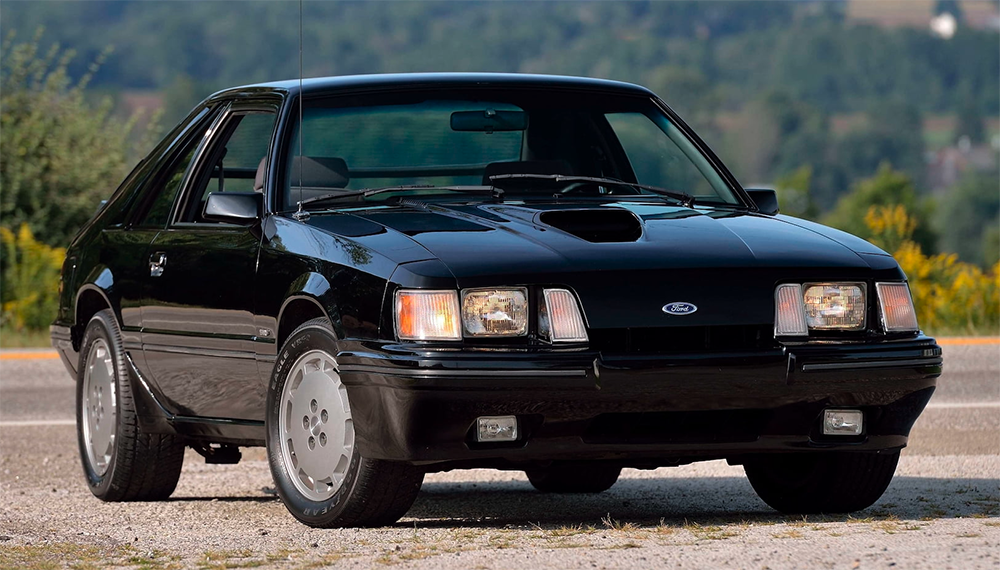 Above and below: From 1984-86 Ford produced the Mustang SVO (1984 shown). SVO stood for Special Vehicle Operations. The SVO had an air-to-air intercooler turbo 2.3L four-cylinder engine that made 170-horsepower and could go like stink. An offset hood scoop, Koni adjustable front shocks, four-wheel disc brakes, and a five-speed manual transmission were all part of the SVO package, as was the twin-plane rear spoiler. All production Mustang photos are courtesy of Mecum Auctions.
Above and below: From 1984-86 Ford produced the Mustang SVO (1984 shown). SVO stood for Special Vehicle Operations. The SVO had an air-to-air intercooler turbo 2.3L four-cylinder engine that made 170-horsepower and could go like stink. An offset hood scoop, Koni adjustable front shocks, four-wheel disc brakes, and a five-speed manual transmission were all part of the SVO package, as was the twin-plane rear spoiler. All production Mustang photos are courtesy of Mecum Auctions.
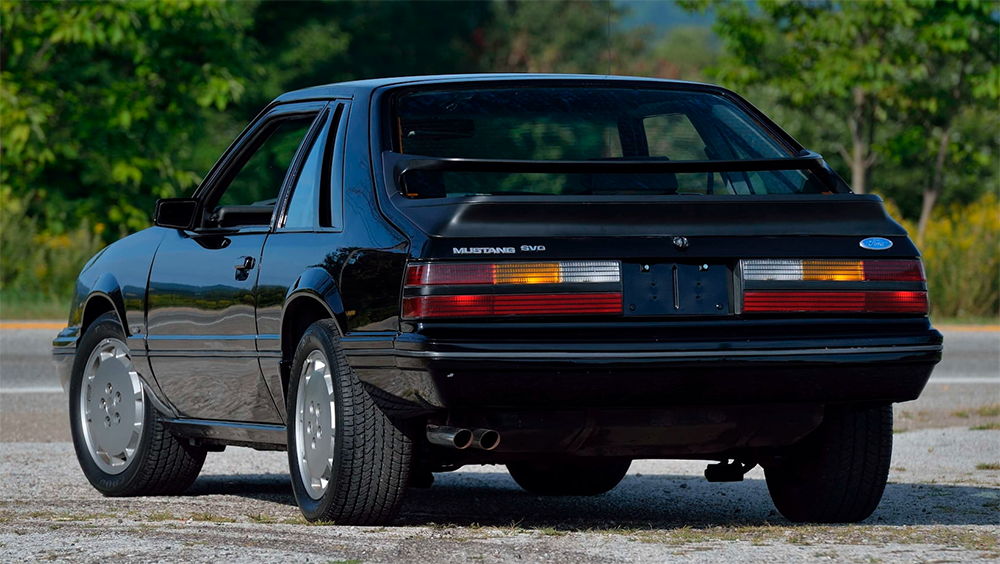
As with the first-gen Mustang, Ford designated three design teams that would compete to create the winning design for the 3rd gen Mustang. Jack Telnack used a process that he called "Directed Autonomy" to have his team follow general design boundaries. He then let them be creative and got out of their way. There was a similar approach used with the first gen Mustang and all three design teams back in the early 1960's, so this was a strategy with a proven formula for success.
1979 Mustang Design & Development
Fox Body Mustang designers were given the following criteria:
- 2+2 hatchback and a notchback
- Based on the Fox platform
- A long hood, short deck
- Performance / Sporty / Aero Look
- Meet the aerodynamic criteria!
- Strong “down the road” graphics
- Wheels at the extremities
- Great stance
- A complete and total departure from the 1978 Mustang II

Above: The form of the Fox Body Mustang 2+2 hatchback compared to another Fox platform sharing vehicle, the Fairmont, reveals the more aerodynamic sloping hood and slant-back grille of the Mustang. The pony car also has a shorter wheelbase (100.5 inches) and "wheels at the extremities" (as mentioned in the Design Brief).
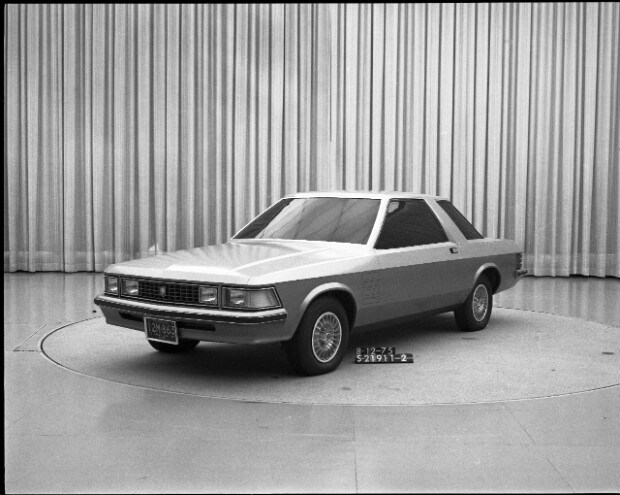 Above and below: These photos of possible alternatives to the 1979 Mustang are courtesy of the Ford Heritage Archives.
Above and below: These photos of possible alternatives to the 1979 Mustang are courtesy of the Ford Heritage Archives.
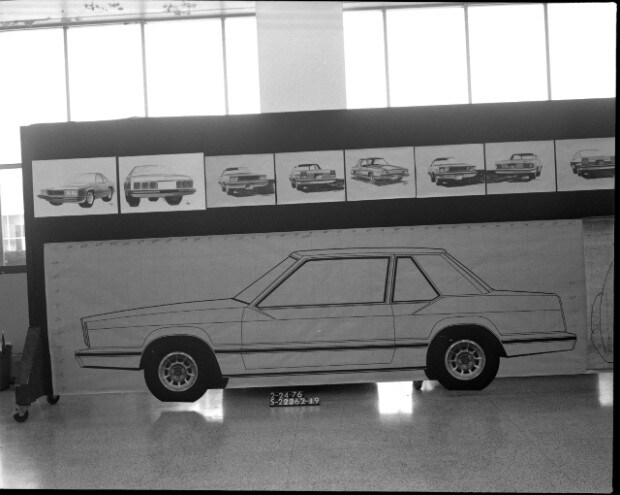
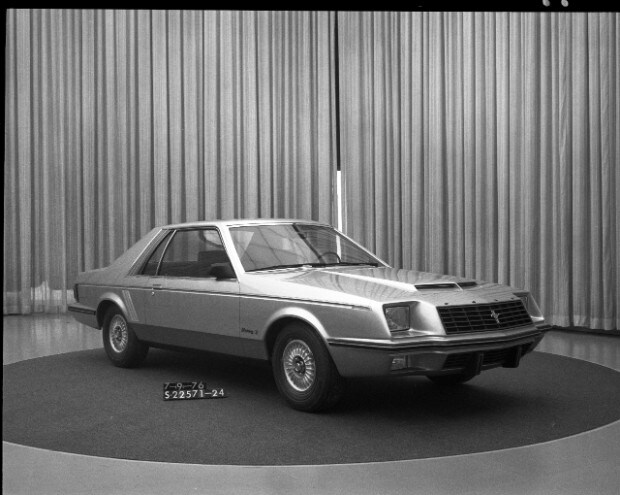 Above: Getting closer...
Above: Getting closer...
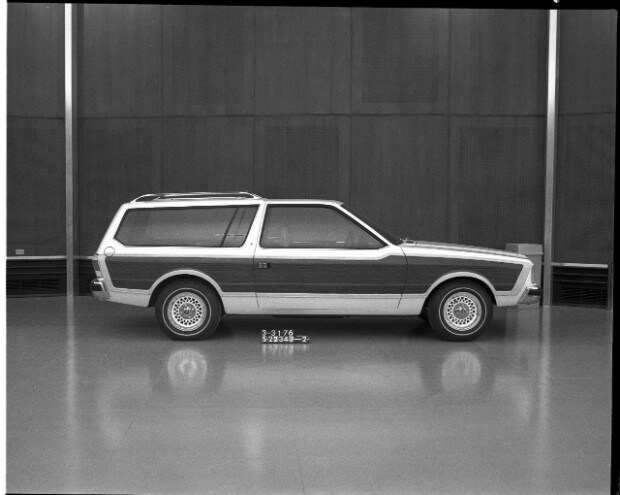 Above: A Mustang woody wagon? This unusual concept never caught on.
Above: A Mustang woody wagon? This unusual concept never caught on.
Fox Body Mustang Model Year Changes
From 1979-81, the Mustang had quad-headlights with an egg crate grille in the center for its nose, which was a huge departure from the front end of the 1st and 2nd generation Mustangs.
Below: The Fox Body Mustang in 1979 was the Official Pace Car of the Indy 500. Customers could order a specially equipped 2.3L four-cylinder turbo version like the one below or a 140-horsepower 302ci V8 version.
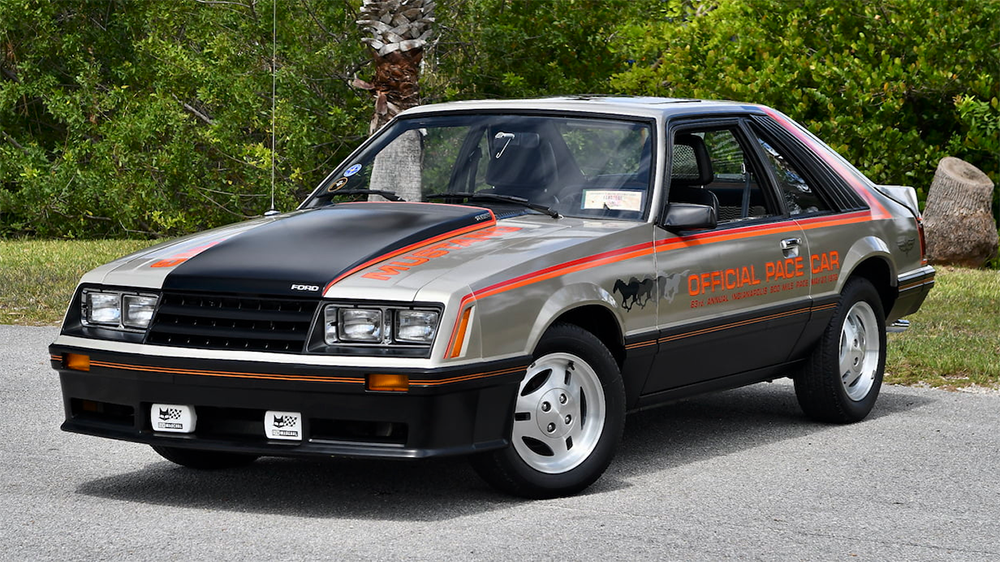
In 1982, horizontal bars were added to the grille on GT models. A minor facelift debuted for 1983-84 model years, with rounded corners and a narrower egg crate grille. For 1983, the Mustang convertible also made a comeback.
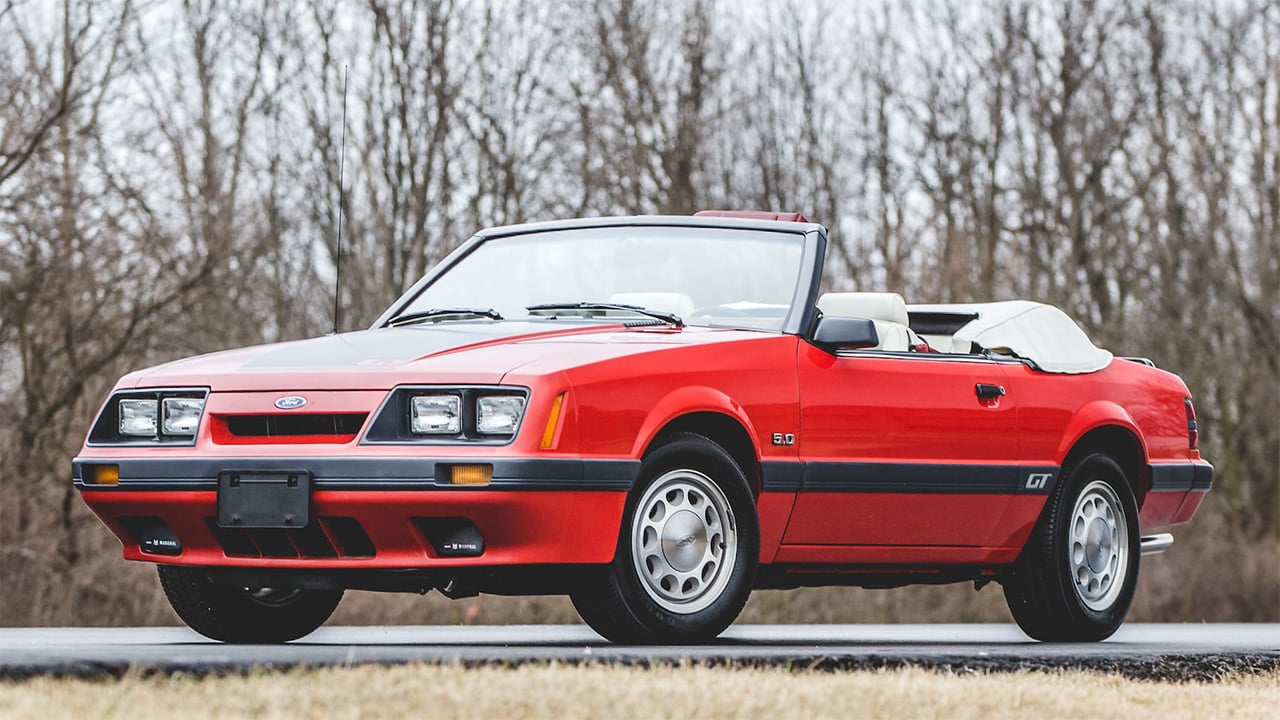
Above: Fox Body Mustang models in 1985-86 have an even sleeker front end. The egg crate grille was replaced with an aerodynamic slot beneath the Ford Blue Oval logo. The car in this photo is a 1986 Mustang GT convertible.
A complete redesign appeared in 1987, with flush-mounted dual headlights and a smoother appearance. This redesign would live on through 1993 with relatively minor cosmetic changes.
The convertible in the three below photos is a 1988 GT convertible. Notice that the tail lights are louvered or have a "cheese grater" appearance body color bezel. This was a Ford factory treatment for the Mustang GT for the 1987-93 GT models.
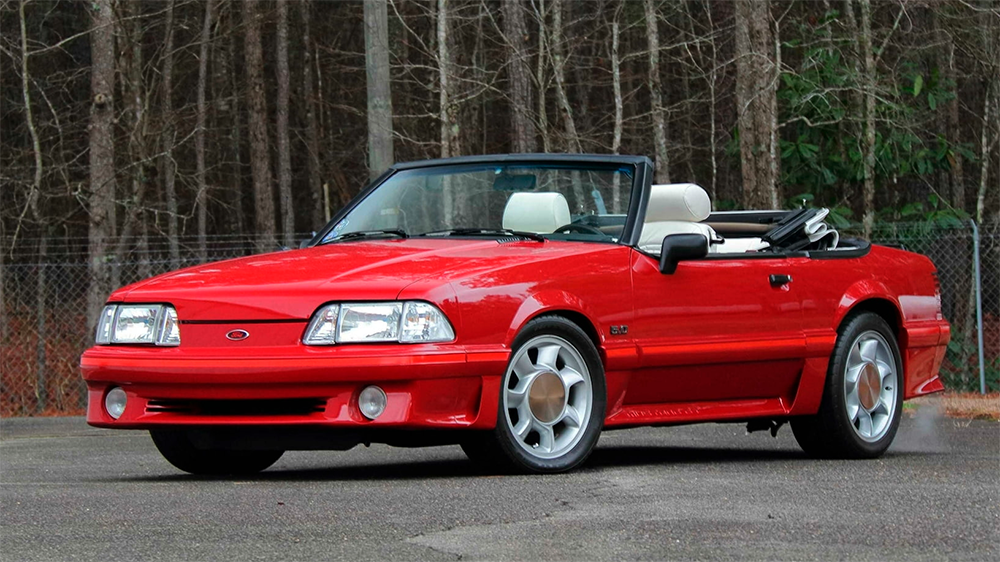
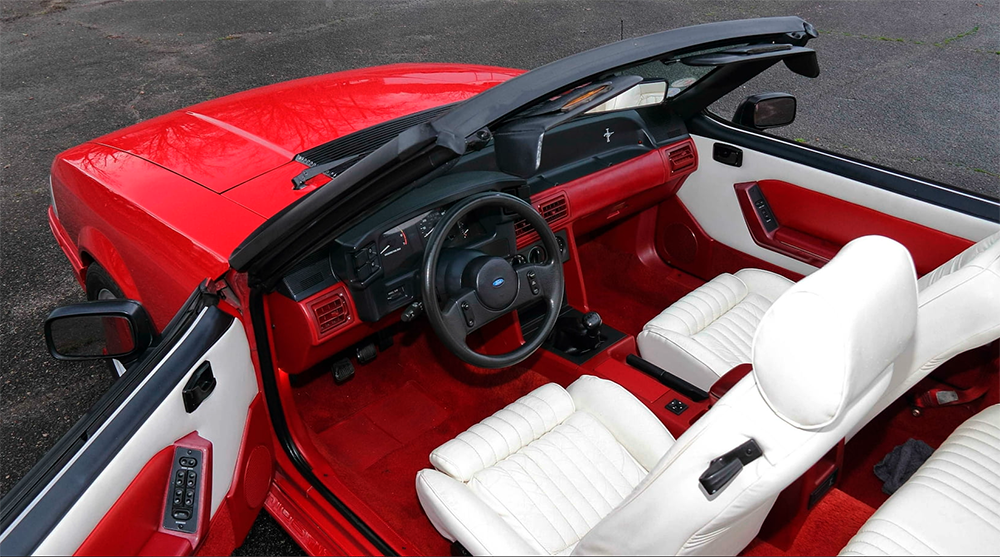
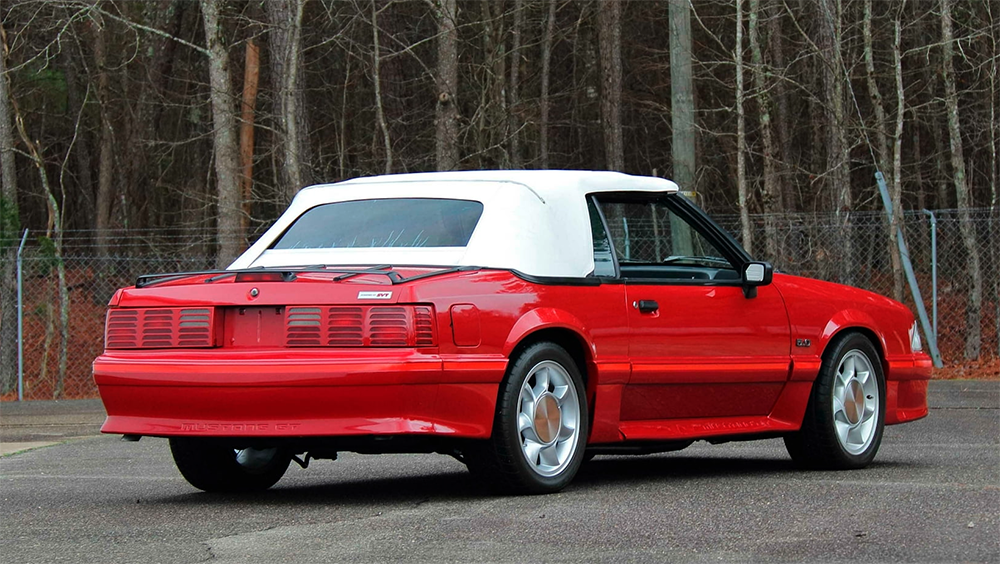
From 1982-1993 the Mustang SSP was available. SSP stood for Special Service Package. Essentially, these Mustangs were specially equipped to handle the rigors of police work, government duties, and law enforcement agencies. They weren't available for sale to the general public, but they are now, if they've been retired from active duty.
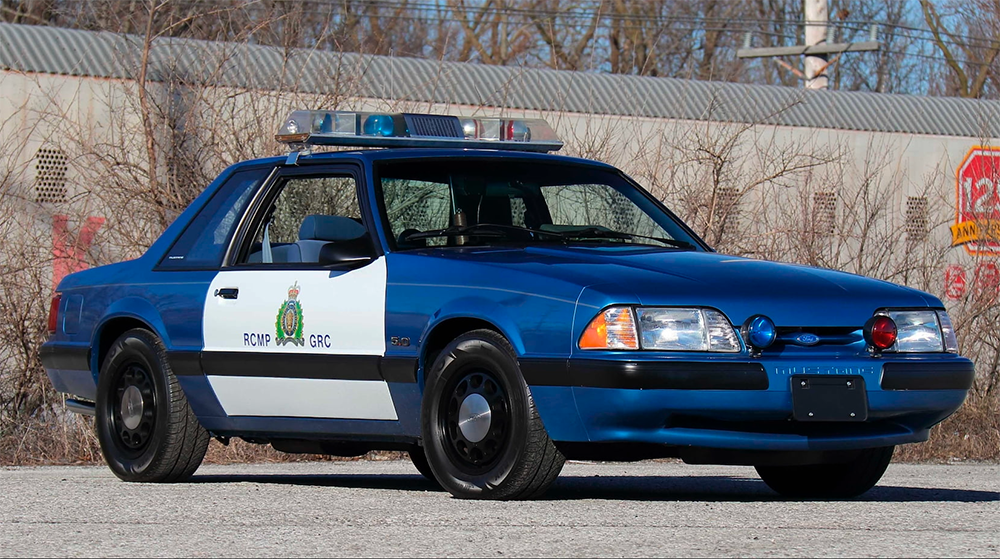 Above and below: This 1989 Mustang SSP is a particularly clean example that was originally in service for the Royal Canadian Mounted Police. Most of these vehicles had automatic transmissions, to free the driver's right hand for use of the police band CB radio, but not this one.
Above and below: This 1989 Mustang SSP is a particularly clean example that was originally in service for the Royal Canadian Mounted Police. Most of these vehicles had automatic transmissions, to free the driver's right hand for use of the police band CB radio, but not this one.
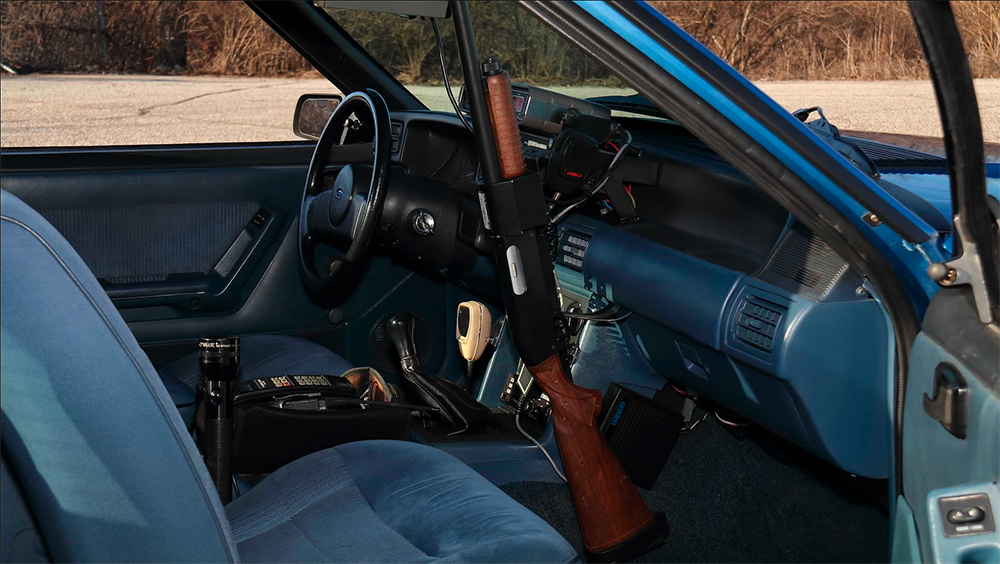
During the Fox Mustang's glorious 15-year run, there were also special limited edition version Mustangs, like the Saleen Mustang. The Saleen Mustang was the brainchild of race car driver Steve Saleen. Steve founded Saleen in 1984. He had the audacious goal of bringing racing technology and performance to the street. His Saleen Mustangs over the years go and handle even better than they look, and that's saying something (as you can see for yourself with the 1989 black beauty depicted below).
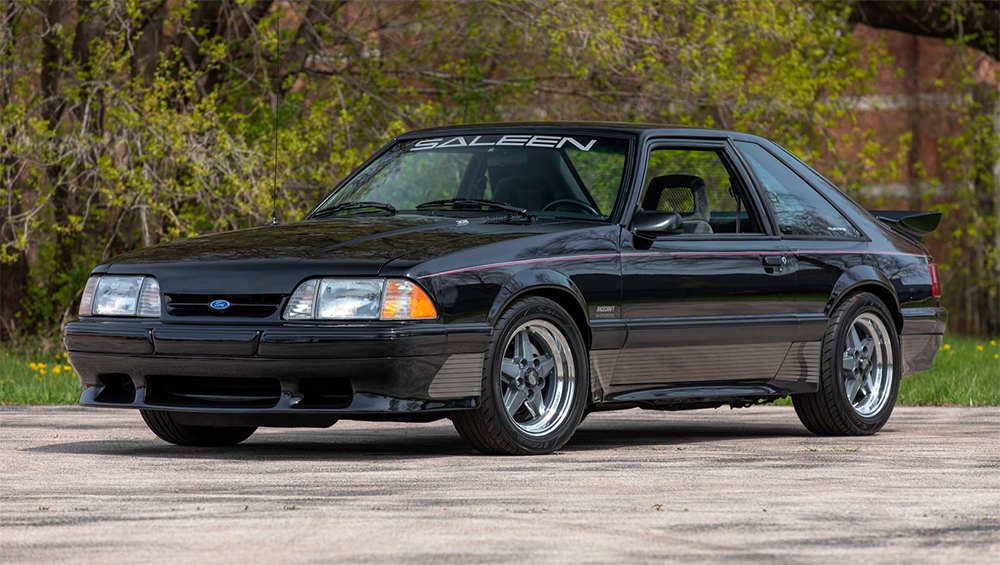
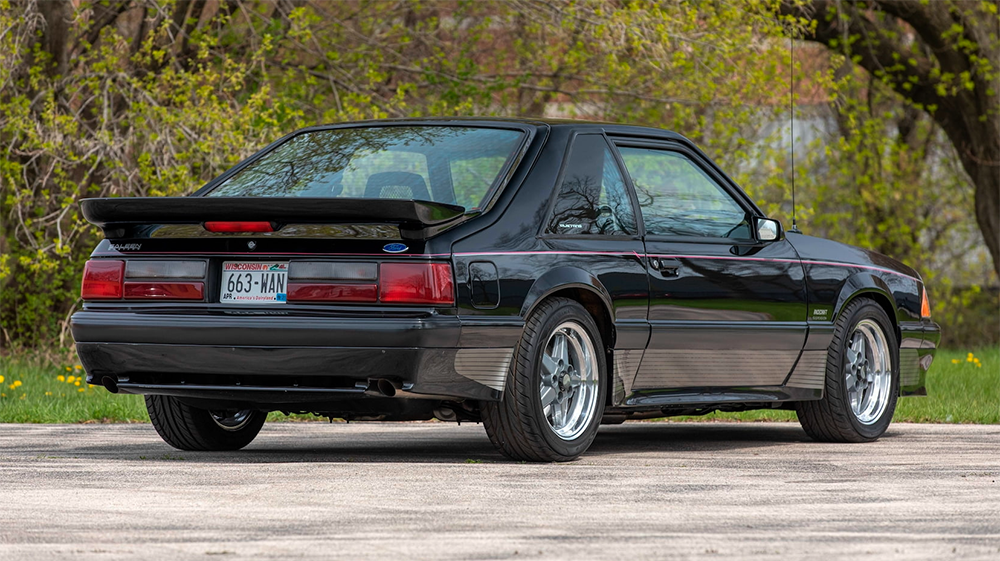
With 15 model years of production, three variants to choose from (hatchback coupe, notchback coupe, and convertible), and limited editions to select (Indy Pace Cars, Saleen, and even a low number of Shelby American versions), it's no wonder that the 3rd gen Fox Body Mustang was a huge sales success for the Ford Motor Company. These pony cars look great, handle corners with ease, are fast, and continue to do well in different forms of racing. Ford sold 2,608,812 units of the Fox Body Mustang, which is second in sales only to the 1st gen pony car that sold 2,981,259 from 1965 (1964.5) through 1973. Fox Body Mustang values are now on the rise.
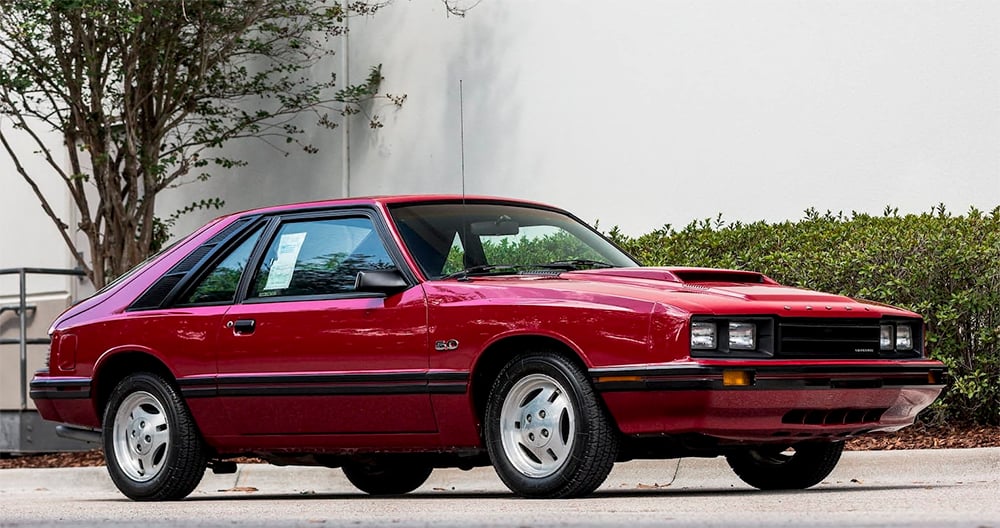 Above: The Mercury Capri was designed in the same design studio alongside the Mustang. The one above is a 1983 Mercury Capri RS. A high-output 5.0L V8 that is backed by a five-speed manual transmission powers the low production Capri RS. By following this link you can learn about the Capri. You can shop for 1979-1986 Mercury Capri parts by clicking here.
Above: The Mercury Capri was designed in the same design studio alongside the Mustang. The one above is a 1983 Mercury Capri RS. A high-output 5.0L V8 that is backed by a five-speed manual transmission powers the low production Capri RS. By following this link you can learn about the Capri. You can shop for 1979-1986 Mercury Capri parts by clicking here.
Below: Check out these 1980's Fox Body Mustang commercials.
More Classic Car History Articles
If you enjoyed this look back at the 1979-1993 Fox Body Mustang, check out some of our other classic car history articles below:
Fox Body Mustang Parts Available @ Classic Industries
As time passes, our pony and muscle cars are going to need some TLC. Classic Industries likely has all the parts you need to keep your Fox Body Mustang to show strong or go long. You can shop online right here. You can also order a free Mustang catalog by clicking on the button below.




